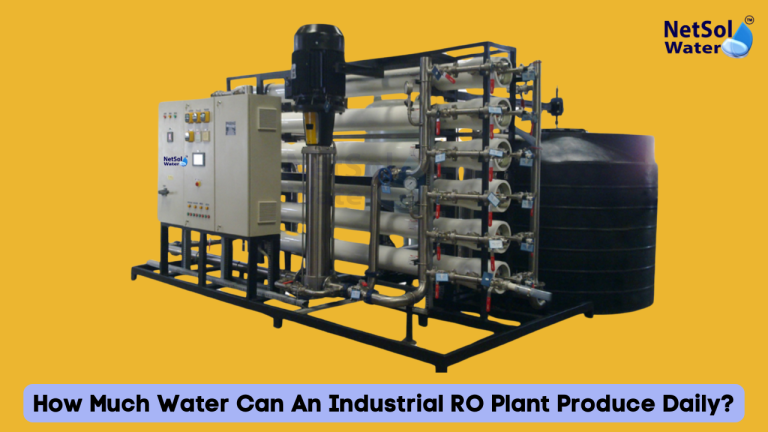
Many of the industrial operations requires purified water, it’s very much important to understand how much water an industrial RO plant can produce each day. Heavy water treating machinery known as industrial RO plants are implemented to remove contaminants like chemicals, salts, as well as heavy metals from water. The food processing, medicinal products, fabric textile, along with power generation industries depend on these machines. However, the first question that comes to mind when discussing planning and investment at a commercial RO plant is how much water an industrial RO plant can produce daily?
Definition of Output Capacity
The amount of water that an industrial RO plant can generate in a day depends on a number of factors, including accurate system design, the water supply quality, membrane type, & also the facility’s capacity. On a typical estimation, industrial RO plant units are specially designed to produce purified water ranging thousands to millions of liters every day. Depending on the industry’s water requirements, some specially designed units are larger than that.
The daily output is usually expressed in cubic meters per day (m3/day) or liters per hour (LPH). A medium plant, for instance, might produce 10,000 to 50,000 liters of drinking water per day, whereas high plants can produce several lakh liters per day. Therefore, the daily output is determined by the size along with purpose of the plant.
Factors Influencing Water Production Every Day
A few crucial elements listed by Commercial RO Plant in their knowledge manual must be taken into account in order to comprehend the amount of water that an industrial RO plant can generate on a daily basis:
1) Quality of Feedwater
The degree of difficulty in operating the RO plant depends on the kind & degree of impurity in the feed water. The system will treat the water gradually or pre-treatment will be required in cases when the feedwater has large concentrations of salt dissolved in it, sediments, or other harmful pollutants. Greater output & increased efficiency are achieved with clean feedwater.
2) Membrane Type & the Condition in which it is applied
An RO plant’s membrane is its primary component. The amount of water treated across a cycle depends on the size, quantity, & level of quality of the system. Maximum production may be achieved with clean, efficient membranes. Water output is significantly reduced by clogged or aging membranes.
3) System Dimensions & Architecture
Larger RO systems may generate a great deal of water per day & are utilized to meet the demands of large-scale companies. A hotel or small factory may be able to get by with a tiny plant, but a large manufacturing facility will need a system that can handle a higher load.
4) Operational Working Pressure
To force water through several fine membranes, RO systems apply certain levels of pressure. Low pressure will prevent water from moving sufficiently, reducing output. On the other hand, high-pressure systems maximize daily supply of purified water as well as optimize operation.
5) Downtime & Maintenance Interval
RO plants requires regular servicing & maintenance to remain in best optimal condition. Daily production will drop if a system is frequently unavailable for maintenance, cleaning, or membrane replacement.
Typical Capacity Ranges for Commercial RO Plants
The following approximate capacity ranges can give you a better understanding of the amount of water that an industrial RO system can produce each day:
- 10k to 30k liters daily for industrial RO Plant systems on a small scale;
- 50,000 to 1,00,000 liters per day for medium-sized plants;
- 2,00,000 liters per day or more for large plants.
Why Does Water Output Per Day Matter?
Planning, budgeting, along with the environment all require an understanding of the amount of water that an industrial RO plant can produce on a daily basis. Industries that depend on a lot of water must choose systems that not only meet their daily requirements but also offer dependability along with little to very limited downtime. Underestimation will be evident in quality & production, while overestimation will result in needless investment.
Choosing the right size also allows the plant to operate as efficiently as feasible & avoids water waste. Knowing your typical water output helps enterprises plan & comply with rules in areas where water is limited or regulations are strict.
Conclusion
According to data examined by Commercial RO Plant, the volume of water that an industrial RO plant can produce on a daily basis varies greatly based on its size, design, & usage requirements. These plants are designed to meet the high demands of industrial-based operations that rely on purified water for primary processes, producing anywhere from a few thousand to several lakh liters per day. Choosing the right RO plant with Commercial RO Plant alongside enough daily capacity is the key to guaranteeing efficient and successful operations if your company needs water for the cooling process, cleaning, production; or food-grade processing.
